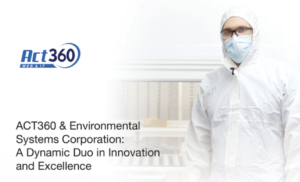In today’s fast paced and ever-evolving business landscape, the ability to adapt and expand your operations has become critical for supporting sustainable growth and success. Scalable ventilation systems have become an instrumental tool in supporting this dynamic, playing a pivotal role in maintaining optimal air quality and flow, which are essential for creating a conducive working environment that can evolve alongside the growth and expansion of the company. In the below article, we will explore how such ventilation systems can contribute towards sustainable business growth and flexibility.
Adaptive Infrastructure for Growing Businesses
As businesses evolve and expand their operations, their requirements for physical space will also change dramatically over time. Growing enterprises often need to adjust their premises to accommodate new employees, additional machinery, or to simply improve workflow efficiency. Such adjustments may include expanding the workspace, modifying the existing layout, or repurposing certain areas for different functions.
Traditional metal ducting systems, which are commonly used for ventilation, heating, and air conditioning in both commercial and industrial business spaces, can pose significant challenges during these transformations. These rigid ventilation systems are often integrated into a building’s structure, making any required modifications a disruptive, as well as costly, undertaking. This impedes the quick changes necessary for accommodating a rapidly evolving business, making it harder to adapt your layout and function as to keep up with market demands and growth opportunities.
In contrast to rigid ducting, fabric ducting systems provide a flexible and efficient ventilation option. Made from lightweight material, these scalable ventilation systems are easier to install and modify than their metal counterparts. This flexibility allows businesses to rearrange, expand, or streamline their HVAC systems in line with new layouts without major construction work or significant downtime. Additionally, fabric ducts often come with customisable options for air dispersion, which can enhance the comfort and air quality of modified spaces. These systems also typically incur lower installation and maintenance costs. The adaptability of fabric ducting compared to rigid ducting means that businesses can continuously evolve their physical spaces with minimal disruption and expense, supporting an agile response to changing operational needs and helping to maximise productivity.
Ventilation That Grows with You
As previously mentioned, fabric ducts are lightweight, easy to install, and highly customisable. This level of adaptability makes them ideal for businesses that anticipate future growth or changes in the use of their space. These scalable ventilation systems can be designed to fit new spaces or configurations without the need for extensive renovations that traditional ducting would entail.
Efficiency and Uniform Air Distribution
Scalable ventilation solutions are engineered to provide even air distribution, eliminating hot or cold spots in a room. This creates a more comfortable environment for employees and can be crucial for processes requiring stable temperatures.
Cost-Effectiveness
Installing or modifying a scalable duct system involves lower labour costs and less downtime compared to a rigid duct system. The lightweight nature of fabric ducting also reduces transportation and handling costs.
Energy Efficiency
Fabric ducts are be more energy-efficient when compared to traditional rigid systems. They are designed to optimise airflow and can be equipped with diffusers that direct air precisely where it is needed, reducing wasted energy.
Aesthetic Flexibility
Available in various colours and styles, fabric ducting systems can be customised to blend seamlessly with a room’s design, or to stand out as a feature in their own right. This can enhance the aesthetic appeal of a workspace, contributing to a more pleasant working environment.
Supporting Sustainable Growth
For businesses committed to sustainability, scalable and efficient ventilation systems are key. Scalable ventilation systems work to contribute towards a lower carbon footprint by improving energy efficiency and using materials that are often more sustainable than those used in traditional ductwork. Furthermore, their adaptability reduces the need to replace entire systems as business needs change, minimising waste.
Creating a Better Working Environment
The quality of indoor air has a direct impact on worker productivity and health. Fabric ducting systems support superior air quality by preventing the build-up of pollutants and ensuring the efficient circulation of fresh air throughout a space. This is particularly important in tightly sealed buildings where air quality can deteriorate quickly without proper ventilation.
In conclusion, scalable ventilation solutions work to provide businesses with the flexibility needed to adapt to changing needs while maintaining a high standard of comfort and air quality. This adaptability is crucial for businesses looking to grow sustainably and maintain a productive, healthy workplace environment. As companies continue to evolve, the role of innovative ventilation solutions will only become more critical in supporting this growth efficiently and sustainably.






